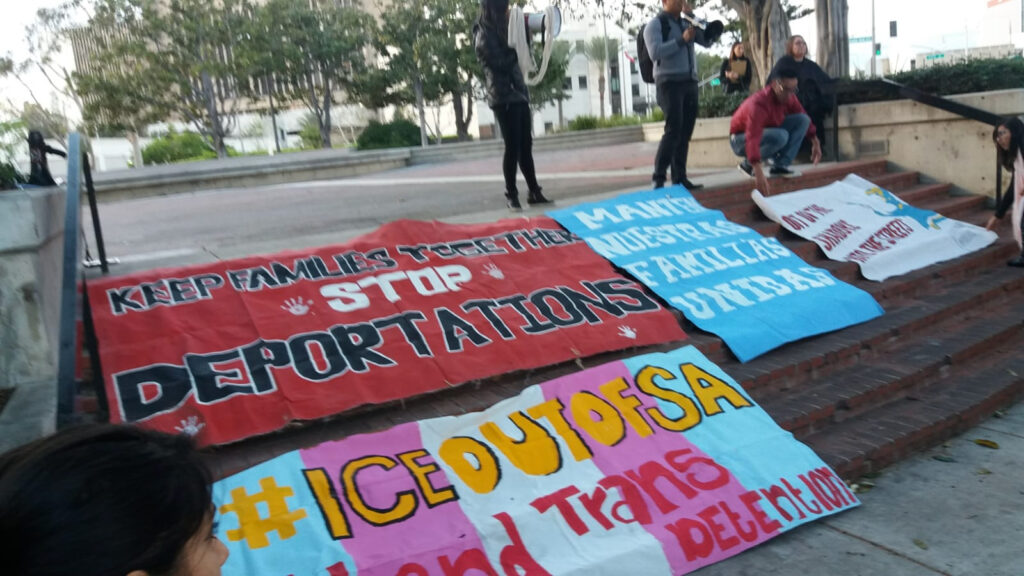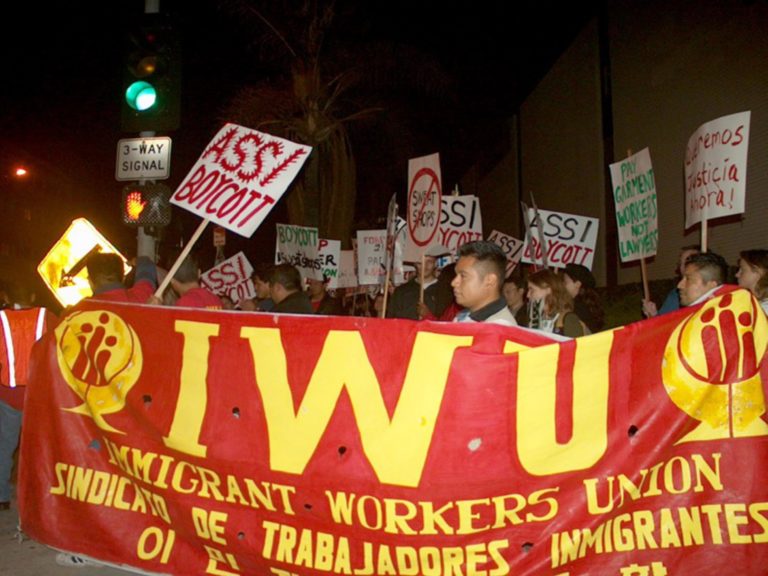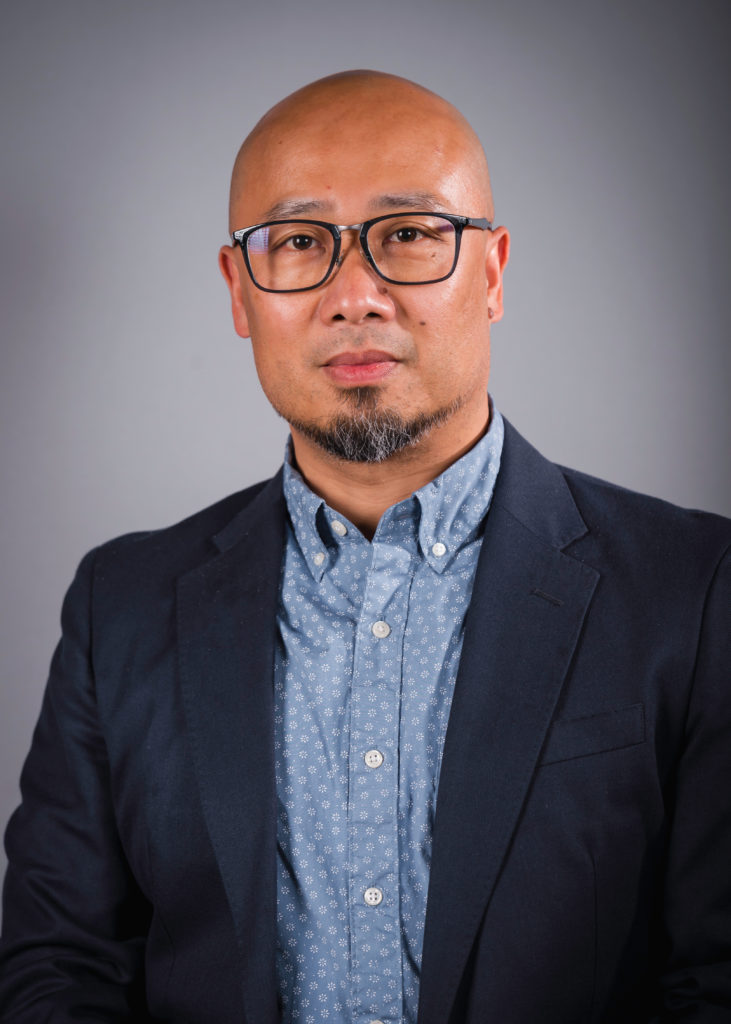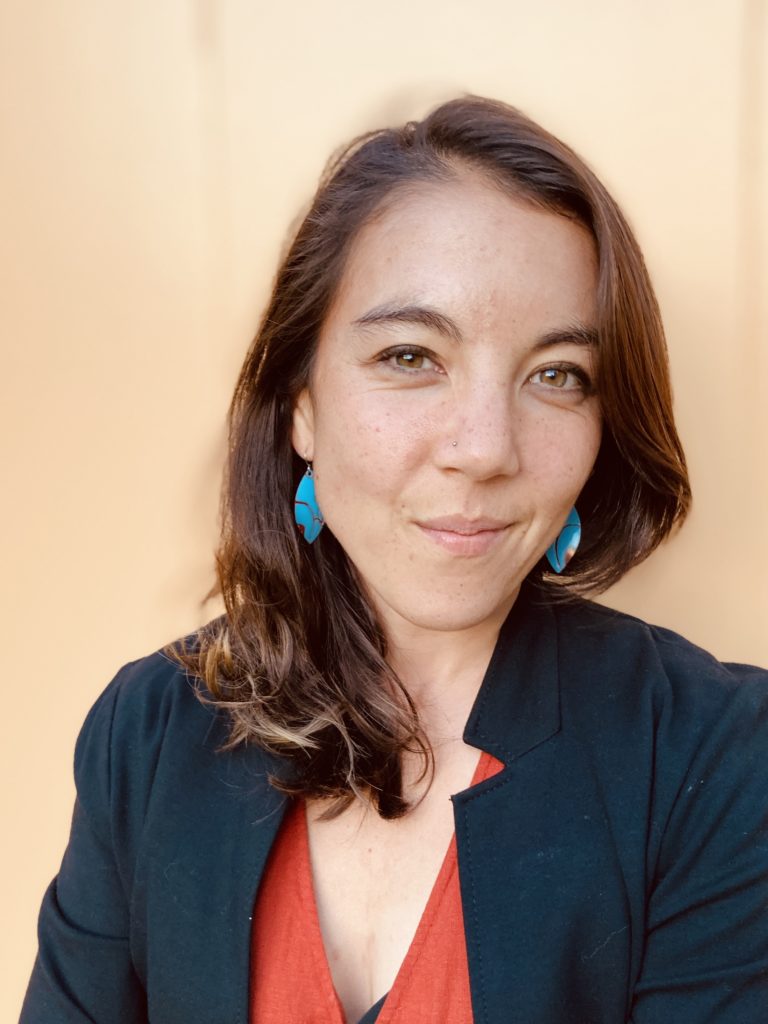
How are transgressive multiracial coalitions built and sustained? What are the affective and epistemological limits of individually-oriented “how-to” anti-racism work? With an ethnographic focus on Black-Asian solidarity work, what impasses in collective identity emerge to beg the question, what is Asian America? Home/Field brought Jong Bum Kwon and Elizabeth Hanna Rubio into conversation to discuss these and more themes, based on Rubio’s recent publication in Journal for the Anthropology of North America.
Jong Bum Kwon:
Thank you to the Home/Field editors for this “Author Engagement” opportunity. Ever since reading your article “Black-Asian Solidarities and the Impasses of “How-to” Anti-racisms,” I’ve looked forward to having this conversation. Anthropological publications are often belated but your piece raises urgent questions about the politics of racial reckoning that seem to have animated much of the recent decade, from the emergence of Black Lives Matter and related cross-racial organizing and protests to the “culture wars” around the murders of Michael Brown (2014) and George Floyd (2020), disproportionate suffering of Black people during the pandemic, and surge of anti-Asian hate.
When we began this conversation in early May 2021, the Atlanta spa murders (March 16) were still recent memory and widespread public consternation about anti-Asian violence had yet to recede and quiet down. News and social media videos of alleged pandemic-related anti-Asian hate crimes continued to spread, and pundits and academics with diverse racial and ethnic identifications called for increased awareness of the history and lives of “Asian Americans.” Perhaps not since the early 1980s has Vincent Chin’s name come up so frequently outside Asian American studies classrooms, and obscure legislation, such as the Chinese Exclusion Act of 1882 and Page Act of 1875, and the concepts of “yellow peril” and “model minority” so widely discussed.
While I had initially welcomed this increased attention to “Asian America,” the narratives became quickly predictable and subtly troubling; simply put, brief history lessons with admonishments to learn more about the American “roots” of anti-Asian discrimination and violence. While they were perhaps appropriate to May’s Asian Pacific American Heritage Month, such responses reflected a liberal politics of recognition and injury that I saw deflecting more critical considerations of white supremacy. Residing for the past ten years in St. Louis, MO, where Michael Brown’s killing by white officer Darren Wilson in 2014 triggered worldwide protests, I became alarmed by how discussions of the victimization of “Asian Americans” were disconnected from those surrounding anti-Black violence. In fact, discussion of one seemed to overshadow the other, and, as it came to light that a very small minority of assailants were Black, there was heightened apprehension around so-called Black-Asian relations, often dealt with avoidance or with platitudes about Yuri Kochiyama and the like.
Your article sheds ethnographic light on the epistemological and affective limits of cross-racial organizing, specifically Black-Asian coalition building in Southern California. Could you share with us the impetus for your research, your analysis of “how-to anti-racism,” and how you’ve experienced and come to understand the current confluence of the pandemic, anti-Asian violence, and BLM and abolitionist movements?
Elizabeth Hanna Rubio:
First of all, I want to also thank the Home/Field editors for pulling together this initiative. So much about the conditions and affects of academic writing get lost in the conventional journal format and it’s a pleasure to have the opportunity to engage with readers in this way. I also have so much respect and gratitude for Jong Bum for his willingness to work through these messy questions with me.
I started writing this research article in May 2020. As you mentioned in your introduction, increased attacks against Asian Americans placed a spotlight on histories of anti-Asian racism. At the same time, COVID-19 was laying bare the depths of the racialized logics that structure the state’s incapacity/structural unwillingness to provide basic protections to its most vulnerable populations. The confluence of these events with the mass protests in defense of Black life that unfolded that summer gave rise to what felt like a veritable onslaught of online panels aimed towards highlighting the importance of Black-Asian solidarity. It was encouraging to see folks drawing connections between different processes of racialization and what they have to do with revealing the logics of the carceral state. So far, so good.
But participating in these panels I saw certain patterns emerge – so much so that in some cases I could anticipate a given panelist’s answer prior to the end of the question being posed. More urgently though, I saw that the repetition of certain historical facts (that, when you think about it, are only tangentially related to the situation at hand) or contemporary statistics or even exact phrases (i.e. “we need to ‘show up’ for one another!”—but not actually thinking about what showing up actually means) became a way for some to escape reckoning with the incommensurability/insufficiency of their political positions. It also otherwise allowed them to skip over the dirty work of building actual relationships of accountability with people, or to conflate accountability work with individualized behavior correction. The performance of certain discursive repertoires was then what allowed some of these panelists to, in one breath, talk about how necessary it is for Asian Americans to stand in solidarity with Black lives and, in the next, propose amped-up hate crime statutes as the response to the onslaught of attacks against us – two positions which are foundationally contradictory. You cannot stop violence by further emboldening the institutions and logics responsible for motivating that violence in the first place. You cannot put out a statement in June 2020 saying you “stand in solidarity against the policing and killing of Black life” and then respond to recent attacks against Asian Americans by calling to strengthen and expand the institutions that do that policing and killing.
So when I think about the pitfalls of how-to-ism, JB, and about the affective states of the organizers I worked with, I also think a lot about your American Ethnologist article on the paradoxes of white morality. These paradoxes lead people to believe that individual antiracist purity is the only or even a good goal, causing them to not only advocate for all sorts of fucked up positions, but also to get themselves stuck in traps of their own making.
When we identify and recognize these discursive shortcuts, we can begin to make sense of why one of the results of the mass uprisings last summer was books like “White Fragility” and “How to Be An Antiracist” flying off bookshelves. People like to rag on Reviewer 2. But I owe a lot to Reviewer 2 of this article (thank you whoever you are!) who pointed me towards folks like Jodi Melamed, Nikhil Pal Singh, and James Baldwin who have shown how white liberals have always turned to what these authors call the literature of racial liberalism in moments of supposed “racial reckoning.” In this sense, DiAngelo or Kendi are just the latest manifestation of a much longer genealogy. Because what these kinds of books are selling is super appealing, right? They’re saying “look, I know you’re confused and that things you thought were good and just in the world are being turned on their heads, but there’s no need to despair! Just do and don’t do this list of things, or express guilt or awareness and order will be restored.” And none of this to say that mitigating the harms we cause to each other as individuals is not essential. But it becomes troublesome when we focus so much on individual behavior correction that we forget to actually organize – when we forget that liberation work is about building new ways of being accountable to one another rather than walk around in circles in old ones. So this is what I identify as the problem of “how-to antiracism” – it tries to restore a neatness and order to racial hegemonies when ostensibly the aim is to disrupt them entirely.
My primary impetus for writing this piece, though, was to think with these organizers I had been in community with for so many years and wrestle some emergent doubts. I cannot tell you the depths of the love I have for these people. And because of that love, this piece took me the better part of six months to write. Indeed, it was one of the hardest things I’ve ever written. Because I saw these people I love saying to themselves – ok, we fucked up. Like, a lot. We caused serious harm to people we had the responsibility to be deeply accountable to. And now we’re implementing these tools – the fishbowls, the antiblackness workshops, the political education and what not – but we’re still causing harm and ending up in the hamster wheel of white liberal “allyship” we despise. I wanted to show through intimate ethnographic detail how these logics ended up selling people short. And I wanted to take this impasse seriously. So first and foremost my impetus in writing as I did was to take this troubling process and ask why the hell this keeps happening in multiracial social justice (Savannah Shange’s “Progressive Dystopia” is an absolute must-read on this theme). I wanted to do so in a way that took seriously the internal contradictions and incessant doubts with which the organizers were wrestling.
JBK:
“How-to” anti-racism was evident in my own research. Many of the liberal white women in my study shared long reading lists and were involved in a range of anti-racism learning opportunities. And, similar to what you found in your examination, their “work” on facing their whiteness drew from logics of racial liberalism, and I would add, a prevailing neoliberal ethos on self-improvement. And, much like the impasse that you describe, these self-identified liberal, progressive women, experienced deep moral insecurity.
Your care for the organizers comes through clearly in your piece. Your writing evinces a degree of intimacy and self-imposed accountability to the people and their goals. The deeply troubling and frustrating “impasse” that you so carefully analyze complicates any presumptions of the racial-ethnic and political identifications and attachments of “Asian Americans.” The public discussions of Asian American history exposed in some ways our own, and here, I mean “Asian American” racial reckoning. When we speak of Asian America what are we speaking about? When we identify as Asian American what do we align ourselves to? Must “Asian America” arise from experiences of violence? The tensions are not only external— history of Asian racial formations—but deeply internal to the organizing community, and as you demonstrate, within ourselves in our myriad attachments, yearnings and anxieties. In this regard, could you share what you found to be important aspects of your own background and how your positionality affected your research?
EHR:
In speaking to your questions about positionality, many of the questions and internal struggles I try to document in the article arose from similar issues I wrestled with during my years as an organizer with undocumented tenants and then survivors of sexual and domestic violence in the Washington D.C. metropolitan area. There’s a certain affective sensibility I think you become attuned to when you’ve dwelt for so long – first as an organizer and now as a researcher – in that pained space that lies between our political ideals and our actual embodied experiences as people living under the very systems of oppression against which we struggle. So in terms of the writing and the formation of questions I think it was my organizing background that perhaps took center stage.
Continuing on the question of positionality and also getting to your question about what is “Asian America”: one thing that was interesting to me was that situated as we were in Southern California, almost all of the participants and organizers of the organizing school were from either first or second generation Mexican, Central American, Vietnamese or Korean American immigrant families. Most of our meetings took place in an office space in Westminster, which is home to the largest Vietnamese population outside of Vietnam. Indeed, the large Vietnamese presence in Southern California is due to the fact that so many Vietnamese refugee families were channeled through Camp Pendleton upon arrival. I’m a mixed-race Korean American born to a South Korean mother who met my white father in South Korea (this was not a typical military encounter, but the rest of the story is a bit too complicated to tell here). So I am perhaps hyper-aware of the fact that the actual biological fact of my existence and my presence in this country are direct results of war and US imperialist excursions. I am quite literally a product of empire. The same could be said of almost every single person present in the organizing school – this was something I knew because we did a lot of work throughout that summer sharing our familial immigration stories. So many beautiful conversations arose from that sharing and they reminded of this haunting line author Ocean Vuong has in his masterpiece “On Earth We’re Briefly Gorgeous.” Vuong asks, “when does a war end?” And so here we were: a group of young-ish people living in Southern California – some born in refugee camps, some who crossed the border as toddlers –all present to varying degrees as a result of war and empire, in this room trying to figure out this question. How are the wars that made us or brought us here still shaping the way we live our lives? But yet, because so much of the solidarity talk was anchored in this more personalized behavior management, the group couldn’t translate these vital story-sharing exercises into a basis for more meaningful forms of coalition oriented towards radical anti-imperial and anti-capitalist projects. It was thus surprising to me that given the specific backgrounds of the participants in the organizing school that shared imperial histories seemed to be largely removed from the actual political agenda.
I think though I’m not quite addressing the question of “what is Asian America?” and perhaps it’s because I haven’t entirely settled on an answer myself. Some might say that we are united by a project of racialization – shifting US racial hegemonies have always placed us in the same boat so, ostensibly, thereby we have shared experiences of racialized oppression. This is certainly true to an extent but of course is rendered inadequate by intersecting questions of class, colorism, specific relations to US empire, etc. East Asian Americans are not Asian American in the same way Southeast Asian Americans are, for example – nor am I by this definition Asian American in the same way you are given that I am read as white to some. But I’m not not Asian American. And as I mentioned above, there is something to say for these shared traumas of war and empire – particularly when those histories become the jumping off points for anti-capitalist and anti-imperial work.
At the same time though, I struggle with this idea of claiming an identity that is structured solely by a common wound – Wendy Brown (1993) has called this a problem of the “wounded attachment.” Liberal recognition schemes corner us into this paradox: It requires that we group ourselves into these essentialized identities (that may be recognized by the state) but the problem is that the identity of the “unrecognized” group is only legible insomuch as the wound remains unaddressed. So, it’s vital to also articulate how these identities cohere in terms of a presence rather than an absence – less a question of shared geographic origin and more about a shared commitment to certain political principles. In her sweeping history called “Serve the People: Making Asian America in the Long Sixties,” historian Karen Ishizuka reminds us that this was the founding idea of “Asian America.” She quotes Chris Ijima (an early Asian American activist and musician) saying that the term “Asian American” was meant to be “less a marker of what one was and more a marker of what one believed.”

JBK:
For many who identify in some ways with Korea and Korean America, Southern California, specifically Los Angeles and Koreatown, is laden with complex and dense feelings. It is a symbol of Korea’s global ascension and by proxy Korean America, the irony of the imperial origins of Korean migration notwithstanding. It is also the place of one of the largest urban “riots” in America’s history. As you note, the progressive framing of the “LA Uprising” simplifies more complex interracial encounters, from the long history of racializing people of Asian descent with and against Blacks to uphold white supremacy and recuperate national reputation to the killing of Latasha Harlins. Antiblackness remains a troubling complex in progressive Asian American communities, as you so well document. But, I’m also interested in the “Asian-ness” of Asian America, meaning, how do the activists and organizers from diverse national origins and migration histories identify with and against other “Asian” people, especially given Asian histories of war, colonization and ethno-nationalism.
EHR:
This is such an important question. You name a place where I think we need a lot more ethnographic research – particularly in these incredibly fraught zones like LA’s Koreatown. K-town is such a place of contradiction that really lays bare the insufficiency of racialized categories as a marker of shared experience. You have uber-wealthy Seoul-based elites pouring money into businesses that not only exploit Korean and Latinx workers for meager wages and shameful working conditions, but also actively displace particularly elderly, lower-income Latinx, Black, and Korean American residents from their homes. In many cases it is wealthy Koreans exploiting other working-class Korean Americans. This is why organizations like Koreatown Immigrant Worker’s Alliance are so important and please if you’re reading this, I’m begging you to look at their work. They organize Korean and Latinx workers more often than not against unscrupulous Korean companies and landlords – they choose an anti-capitalist framework that supersedes an ethno-nationalist one.
The other question I’ve been thinking about lately is if and how ethno-national labor exploitation dynamics in Asia play out amongst various Asian American communities in the US. Many of the most exploited workers in South Korea, for example, are Filipinx and Southeast Asian migrants – and folks interested in this should definitely read Hae Yeon Choo’s “Decentering Citizenship: Gender, Labor, and Migrant Rights in South Korea.” I think a really important starting place for future research would be to look at the circulation of these tensions within Asian American communities in the US – especially in places like where I live in Orange County, California where these communities are so large and in such close proximity to one another.
This is an ongoing and emergent conversation between the authors as they continue to develop more work on the ideas presented here. To read more of Elizabeth Hanna Rubio’s work and keep up with her publications on these topics, please visit her website here.

